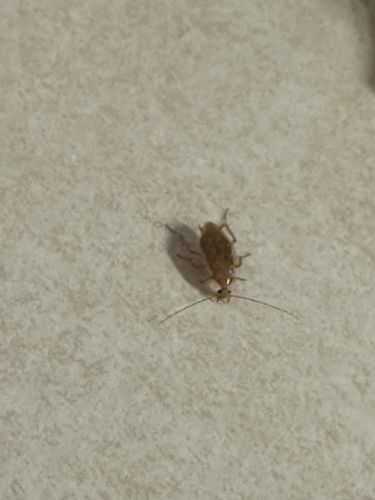German Cockroach
Scientific Name: Blattella germanica
Order & Family: Blattodea, Ectobiidae
Size: 1.1 cm to 1.6 cm (0.43 to 0.63 inches) in length.

Natural Habitat
Found primarily indoors in human dwellings, preferring warm, humid areas close to food and water sources such as kitchens and bathrooms. They are often found in cracks and crevices.
Diet & Feeding
Omnivorous scavengers. They eat almost anything, including food scraps, grease, starches, sweets, meats, and even non-food items like soap, glue, and toothpaste when food is scarce.
Behavior Patterns
Nocturnal, hiding during the day and becoming active at night to forage for food and water. They are known for rapid reproduction and can infest an area quickly. They prefer harborage in tight spaces. They can climb smooth surfaces due to sticky pads on their feet.
Risks & Benefits
Potential risks include spreading pathogens (bacteria, viruses, fungi, parasitic worms) that can cause food poisoning, dysentery, allergies, and asthma, particularly in children. They can also contaminate food and surfaces with their feces and shed skins. There are no known benefits to humans or ecosystems from German cockroaches.
Identified on: 10/15/2025